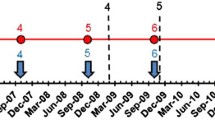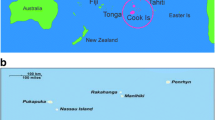Abstract.
Lymphatic filariasis is a significant public health problem in several Pacific island countries. Papua New Guinea is one of the most populous countries in this region, and 39% of its residents are estimated to be infected with Wuchereria bancrofti. The Ministries of Health of the 22 islands and territories in the Pacific region are committed to taking action against lymphatic filariasis. Accordingly, a regional collaborative effort aimed at the control of filariasis has been organized under the auspices of a program referred to as PacELF. The main objective of PacELF is to eliminate filariasis as public health problem in the Pacific region by the year 2010, 10 years before global elimination of this infectious disease has been targeted. This contribution describes the epidemiology and ecological features of filariasis and prospects for its elimination in Papua New Guinea. The frequencies of microfilaremia, chronic lymphatic disease, and acute filarial morbidity in Papua New Guinea are higher than in many other endemic countries of the Pacific, Africa, and South America. All possible combinations of these three manifestations of filariasis exist. They occur independently of each other, and there is no association between chronic lymphatic disease and microfilarial status. Anopheles punctulatus mosquitoes are the main vectors throughout the country. Transmission intensity is heterogeneous and a major determinant of local patent infection and morbidity rates. Annual transmission potential and annual infective biting rates are positively associated with the village-specific microfilarial rate, mean intensity of microfilaremia, and prevalence of leg edema. Children and adults have similar worm burdens, assessed by circulating filarial antigen levels, in areas of high transmission, whereas worm burdens increase with age in areas of lower transmission. Intensity of exposure to infective third-stage larvae (L3) is significantly correlated with filarial antigen-specific lymphocyte proliferation and cytokine production, possibly by a mechanism that alters APC function. Historical evidence suggests that residual insecticide spraying conducted for malaria control in some parts of the country interrupted transmission of W. bancrofti as it did in the Solomon Islands. Prospects for eliminating lymphatic filariasis in Papua New Guinea are good and may be achieved by the end of the second decade of the twenty-first century if an integrated control approach using mass drug administration with vector control is adopted.
Similar content being viewed by others
Author information
Authors and Affiliations
Additional information
Electronic Publication
Rights and permissions
About this article
Cite this article
Bockarie, M.J., Kazura, J.W. Lymphatic filariasis in Papua New Guinea: prospects for elimination. Med Microbiol Immunol 192, 9–14 (2003). https://doi.org/10.1007/s00430-002-0153-y
Received:
Accepted:
Issue Date:
DOI: https://doi.org/10.1007/s00430-002-0153-y




